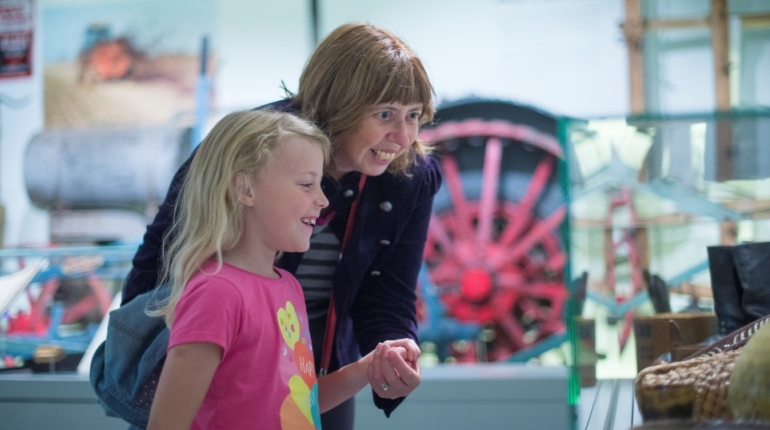The Museum of English Rural Life has been an on-campus fixture at Reading since the 1950s. In latter years, however, it had become just that – a fixture. In order to resonate with a new generation and expand its appeal, the MERL needed a facelift.
As part of a major refurbishment, core-funded by the Heritage Lottery Fund, the Museum team wanted to lay aside the ‘dusty farm tools’ image and inject inter-displinary life into the galleries. As well as forging fresh links to people with rural knowledge, they were seeking to expand their local audience, to attract visitors from more diverse backgrounds as well as those who had loved the Museum for years.
With funding from the Wellcome Trust and support from experts, the team began to explore rural life through a new prism: its health. New content about the history and future of food and nutrition, material bringing animal health to the fore, and a fresh focus on rural medicine all helped revitalise the collections. Alongside this, dynamic programmes of activity – from eating insects to growing sugar beet – broadened the Museum’s appeal.
The project expanded the MERL’s pool of collaborators, creating links with artists, scientists and other experts, increasing their knowledge of how people understand collections and how they might connect to global health and food challenges. The team has now cast the MERL as a vital space for science engagement alongside the arts and humanities. By combining online, offline and in-gallery techniques, the Museum has moved the impact of its displays beyond its physical boundaries, bringing in audiences far beyond its geographical reach as well as those close to home.
Partners: Wellcome Trust, Reading Hackspace, First Foods Residency, the Silvers Workshop, and colleagues from across the universities of Reading, Bristol, Cardiff, De Montfort, Kings College London, and Leeds Trinity
Judges’ comments: “The new galleries at the MERL demonstrate just how much can be achieved with good collaboration between curators and researchers”
Shortlisted for the University Research Engagement and Impact Awards 2018
First published: June 2018

